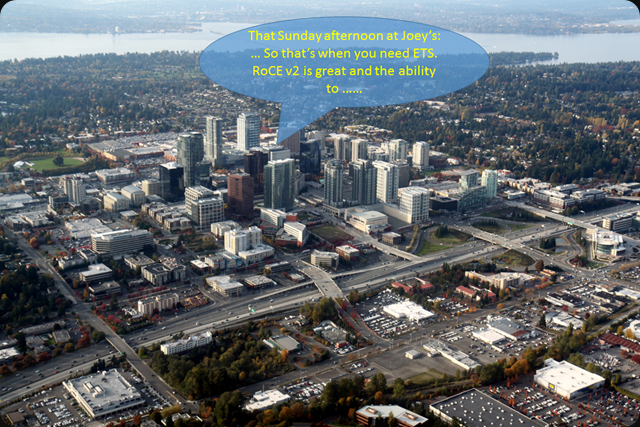Happy New Year from a renewed Microsoft MVP in 2016
It’s January 1st 2016, late in the afternoon here local time and I have just received great news to start the new year with. It came by way of an e-mail notifying me I have been renewed as a Microsoft Most Valued Professional (MPV).
The Microsoft MVP Award provides us the unique opportunity to celebrate and honor your significant contributions and say “Thank you for your technical leadership.”

So it’s time for a happy New year from a renewed Microsoft MVP in 2016. My expertise is now Cloud and Data Center Management. It’s quite an honor to be renewed. Somewhere people think I make a big enough difference to be recognized, that caresses my ego just a little bit. More importantly however it means I get the opportunity to keep working with a lot of passionate and talented people. The ability to participate in a global community and ecosystem focused on our areas of expertise is something I have enjoyed for many years now. Attending the MVP Summit is the cherry on the cake and they sure do make you feel welcome at every place you stop on and around the campus.
![clip_image001[5] clip_image001[5]](https://blog.workinghardinit.work/wp-content/uploads/2015/12/clip_image0015.jpg)
My fellow MVPs are always very helpful, they are both an inspiration as well as a source of tremendous experience and knowledge. Being a MVP has opened opportunities to both learn and teach, both professionally and personally. That’s what enabled me to grow in depth and breadth within my areas of expertise which ultimately translates into our new expertise assignment, cloud and datacenter management.
Thank you!
It’s a good time to wish you all a happy New Year. Let me take a moment to express my gratitude to all loyal or accidental readers of WorkingHardInIT. A blog without readers would be a sad thing but luckily you’re all reading this blog more and more, year after year.

I’m grateful you for your continued support and spending the time reading my blog. To the people, businesses and organizations that given me so many opportunities and support and with whom I had the pleasure to work with in 2015, I say thank you and let’s continue to do so. I wish you all a marvelous 2016 with lots of joy, good health and tons fun at and outside of work!
The road ahead
2016 will be an interesting year. There’s a lot going on in our industry, some of it is hype, a lot of it is real. That reality is sometimes sobering but often inspiring. Keep cool, don’t panic or go ballistic. Smart discipline with a good portion of common sense, insights and a solid, yet flexible plan wins the day. You’ll also need some luck and turn up at the right place at the right time every now and then, ready to make the most of an opportunity. You get the idea.
There are and have been, as always, personal and professional challenges. That’s a given. Only newbies and idiots make picture perfect plans. They then get “dazzled” by the first punch on their snout which sends their plans falling apart like shattered glass. Sometimes the challenges are bigger and harder. This can mean you need to work even harder, smarter and perhaps even longer. It can also mean to cut your losses and disengage. No matter how good you are, how long, hard and smart you work, you cannot right all wrongs in this world. Leave that to the self-promoting LinkedIn blogs on “personal success and growth” aimed at ridiculously entitled people or the painfully naïve.

2016 will also know its challenges. They will be met with all the attention and dedication required where and when needed. They will be passed by or ignore where the effort just isn’t worthwhile. There’re good places to go, nice things to do and great people to meet. If I can seize as many opportunities in 2016 (TechEd, ITPROCeed, E2EVC, VEEAMON, Microsoft MVP Summit, ExpertsLive) like I have been able to do in 2015 I’ll be a happy man, both professionally and personally.
How to get a dream job in 2016?
I’ve been asked that a couple of times. I’m not the one for handing out personal advice, that would only shock your parents and potentially shake your worldview as well. Professionally I’d say, your profession, your career is not the same as your job. It might be, but more often than not it isn’t. That’s OK. You can build a career in your (chosen) profession even despite your job or jobs. Most MVPs work very hard and we put a lot of personal time into our technical skills and community. It isn’t a lifestyle of the rich and famous as some would think when you read a blog about a conference or summit.

Those are a fun part of work, that’s for sure, but they don’t define our work days. It’s lots of work, learning, sharing and many battles are uphill!. We all have jobs that require us to do things we’d rather not have to do. Do what you need to do to stay afloat but try to do as much of what you like and enjoy it as possible. Do it smart and don’t waste your time or let others waste yours. The latter is something you should not do to other people either. When it comes to jobs it’s not all that simple as the sloganesque “Do what you love, versus work for money/the man/a pension/security” for most people. Sure most don’t like to admit that they have to take crap, but we all do. Anything else is as much BS as every employer that seems to pretend everybody has to be and is an engaged, inspired team player who’s going all out for the company, beyond and above what the job demands. That’s a bit too much like Office Space’s “Is this good for the company?” for comfort 😉



![clip_image001[5] clip_image001[5]](https://blog.workinghardinit.work/wp-content/uploads/2015/12/clip_image0015.jpg)





